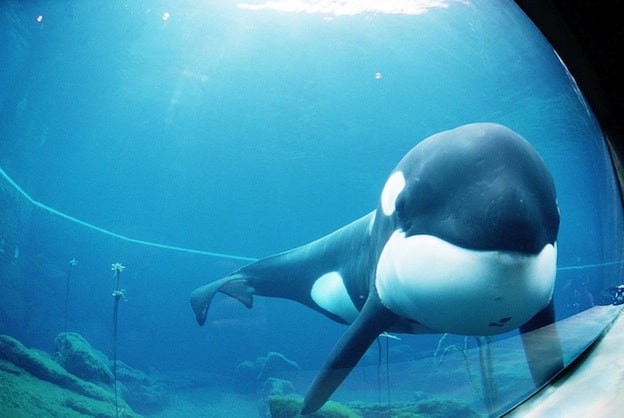Orcas in popular culture
Killer whales are very distinctive and easily recognizable animals, thanks in part to the popularity they have gained through various cultural manifestations of man.
Many ancient civilizations knew them well. The Roman writer Pliny the Elder, who died in AD 79, describe them as huge animals enemies of the whales. Historically, for the native peoples of North America sighting of killer whales is common, so they developed an interesting mythology about them. For example, in the beliefs of the Kwakiutl and Nuu-chah-nulth orcas acquire a relevant meaning for hosting the souls of their chiefs who have died.
Many ancient cultures show great respect for killer whales and are present in their culture and myths. This concept is a bit different in the actual cultures, as they are tagged as fierce whales and highly dangerous creatures. Although for a long time, they had a bad reputation in recent times this has been changing.
The Inuit people today know a lot about orcas. They can identify them and know what they eat, but this is because they live close to them. By contrast, many of today’s Western societies acquire this knowledge through films, literature and television.
The Orca in popular culture
Is there anyone who has not yet seen the film Free Willy (1993)? It is one of the most famous films that portray the orcas, and since its release efforts were made to release to the wild its star, the orca Keiko. The Free Willy story focuses on the friendship that a boy named Jesse engages with Willy, and their intentions to release the malevolent actions of aquarium owners. The music and the classic image of Willy jumping over Jesse are already iconic images of the orcas.
Another known movie (but slightly less than the previous one) is Orca, the Killer Whale (1977). In this case, the representation of these animals is a little less cheerful: after the massacre of a pregnant orca in a village, attacks caused by a male begin to occur. Revenge becomes the thread of the plot. Creating Orca, the killer whale was influenced by the movie Jaws, one that terrified everybody in 1975.
With a smaller appearance, orcas from the movie Rust and Bone (2012) are the cause of a tragic accident in which his main character, a killer whale trainer of a water park, lost both legs.
Blackfish (2013) was the last audiovisual material that put the orcas under the eyes of millions of people. It is a documentary that addresses the risks and problems involved in the captivity of marine mammals and put the main focus on the case of Tilikum, the killer whale involved in the death of three people. Kshamenk, another orca, had appearances in episodes of the Argentinian series Chiquititas and Nano and even participated in the film Magic Bay (2003).

Maybe Tico of the seven seas or Tico and Friends (1994) do not say anything to you, but it is an anime series of 39 episodes, which aired in Japan and is still remembered. Of course, in the West it is not well known. What was the argument? A girl (Nanami) daughter of a biologist becomes friend of an orca, which names Tico, and they have a lot of adventures. In the end, she and her father find a “luminous whale” which they had been looking for a long time.
The fiction writing has not been very prolific representing whales, but we can mention the book on which was based the film “Rust and bone.” The book has the same title, and the Canadian author Craig Davidson wrote it. Many other books on orcas are educational or scientific research.
These works are interesting, and they will offer you a good time. Some others will encourage reflection and awareness. Why not give them a look?
References
http://en.wikipedia.org/wiki/Killer_whales_in_popular_culture
http://en.wikipedia.org/wiki/Killer_whale # Relationship_with_humans
Immortal Monster: The Mythological Evolution of the Fantastic Beast in … By Joseph Andriano


